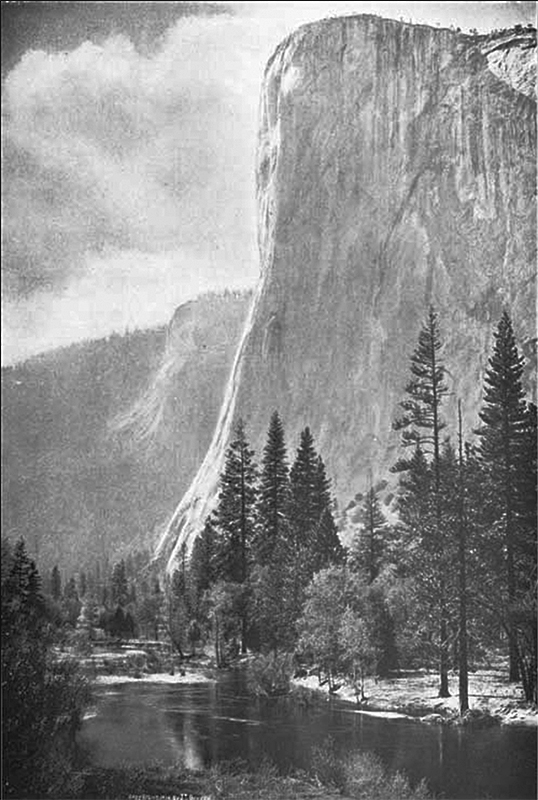
|
|||||||
|
Miwok Creation Legend
| ||||||
The first impressions we have of Yosemite come in the form of the legends of its first residents. Groups of Miwok and Paiute Indians settled in Yosemite between 4,000 and 8,000 years ago. They were hunters and gatherers living primarily off deer and other small game that populated the mountains and off ground acorn meal from the many black oak trees in the region. These Indians referred to themselves as the Ahwahnechee, the people who lived in the Ahwahnee Valley. Ahwahnee was the Miwok word used to describe the gaping, open, mouth of a bear. The Ahwahnechee saw the open end of their valley in this way. White miners and settlers began to move into the region with the discovery of gold in California in 1848. Contact with the newcomers brought devastation to the native population of the entire Mother Lode gold mining region. European diseases like small pox, war with those invading their ancestral lands, and removal to reservations brought an end to their traditional ways of life.1 Ahwahnechee legends include stories about the origins of their valley and many of its most remarkable features. These stories often incorporate important morals for young listeners. The one that follows is no exception. It is the story of the formation of El Capitan, the valley's most prominent mountain. It is often told involving young bear cubs, but the following version tells of two young boys tired from a day's swimming and playing in the Merced River:
Then there was held a great council of all the animals to bring the boys down from the top of the great rock. Every animal leaped as high as he could up the face of the rocky wall. Mouse could only jump as high as one's hand; Rat, twice as high. Then Raccoon tried; he could jump a little farther. One after another of the animals tried, and Grizzly Bear made a great leap far up the wall, but fell back.
The story of a growing El Capitan suggests a great geologic uplift. In fact, this was a part of the distant history of the Sierra Nevada Mountains of which Yosemite is a part. A more important part of the geologic story of the Sierras and Yosemite Valley in particular, though, is one of glacial erosion. During three different ice ages, the last ending over 10,000 years ago, glaciers dug through the valley of the Merced River eating away at the weaker portions of the surrounding granite, carving the faces of Yosemite's mountains and the U-shaped valley in which the Ahwahnechee eventually settled and that we know today.3 To Start You Thinking -
|
|||||

